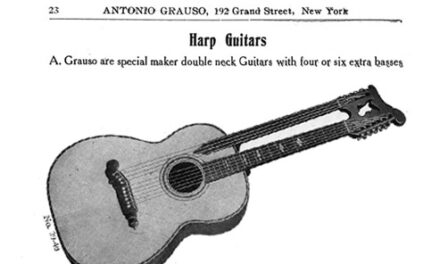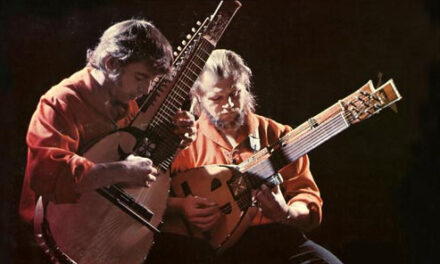
Here are my most recent purchases from eBay. I thought I’d show them “actual size” and unaltered, just to try to give some sense of the palpable “historical vibe” these old photos impart, beyond the “pure image” I ultimately Photoshop-optimize and post in the various Iconography pages and articles.
Some of these are quite inexpensive, while some are fairly pricey – so I don’t get all of them by any means. The main reason I bid on photos like these is not for my own collection (they’re buried in flat files), but to share with interested readers through Harpguitars.net, and of course, for research purposes.
Sadly, of the several dozen images I’ve been outbid on over the years, I think maybe only three of the purchasers later shared the images with us – and that was because I was able to ask them. That was when eBay bidders could easily contact each other, a system no longer available. Not a single bid-winner has since come forward, so rare, important images and documents remain frustratingly in limbo, presumably in private hands (a recent small set of Gibson Soundboard issues being a noticeably significant loss). I implore the owners of items like these to consider sharing them in some way with the interested public.

This very cool hand-tinted photo of a ‘teens Gibson harp guitar player, for instance, might reveal important historical clues upon close inspection.
We can see that he’s playing with fingerpicks, but what is his guitar neck strung with – steel or gut? Both were equally popular, but with two very different groups of players. The “better class” of players always used gut, played with the flesh of the fingers – and Gibson, perhaps the biggest endorser of this music and market, always recommended gut strings for their harp guitars, even to the late ‘teens. The “unsophisticated” amateur “folk” players and popular vaudeville and club entertainers – those who needed volume, invariably used steel.

The young gentleman here (whose life and circumstances we can’t even begin to guess at), despite his fingerpicks, appears to be using gut for his high three strings, doesn’t he? (Note their thickness compared to the wound D string – still, hard to resolve, isn’t it?)

We have no idea where this charming 1935 series of backyard photos was taken, but can vicariously share in the enjoyment the men and women must have had posing with the same set of instruments – violin, button accordion, 12-string mandolin and kontragitarre…I wonder if they all played?!
I have many dozens of these original images (postcards, photos, cabinet cards, etc), and, while I’m not planning on listing or advertising any at the moment, I’m happy to consider re-selling some if any readers are interested (any on the site with “-miner” in the file name are mine). They can make charming additions to your music room, framed and hung alongside your harp guitar!





